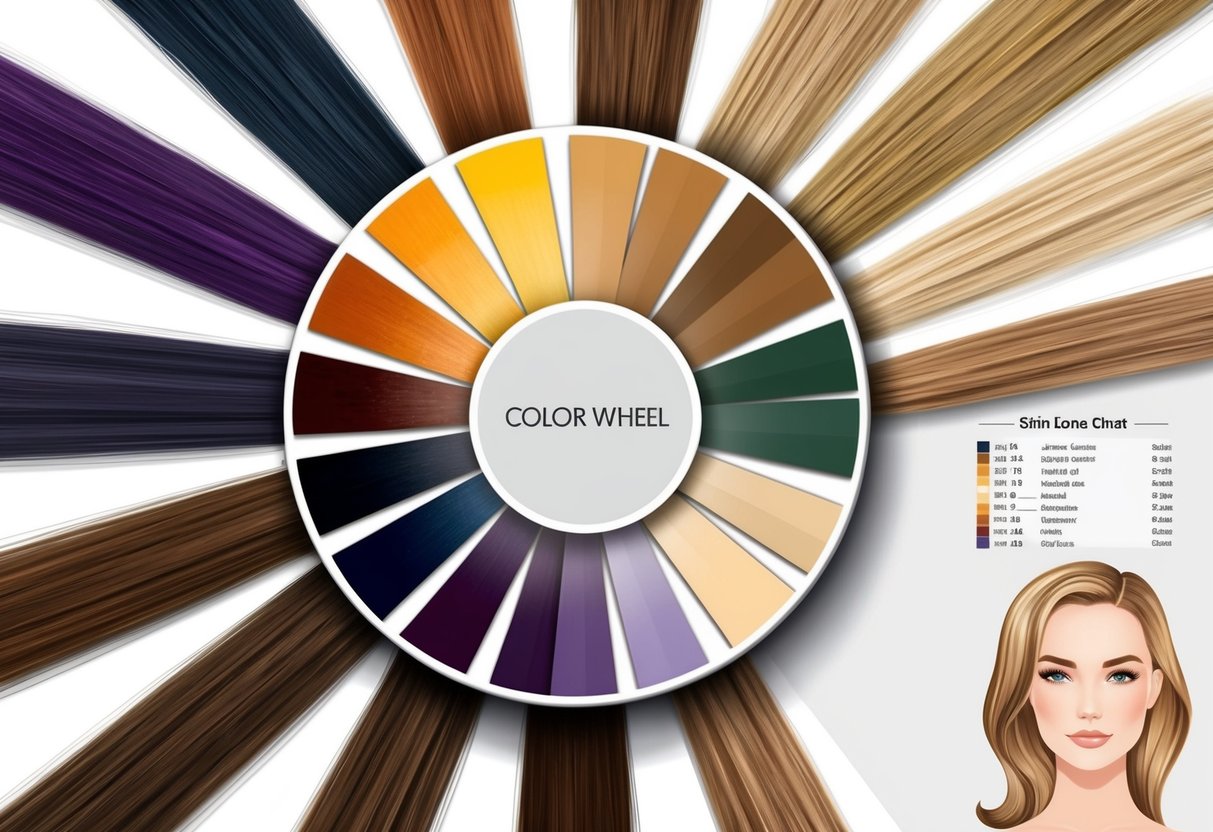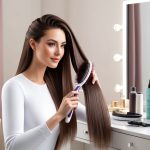
Assessing Your Natural Features
Choosing the right hair color involves more than personal preference. Factors such as natural hair color, eye color, and skin type all influence which shades will look most flattering and authentic.
Understanding Your Natural Hair Color
A person’s natural hair color provides a foundational guide when selecting hair dye shades. Hair color can range from very light blonde to deep black, with several shades of brown and red in between.
Undertones in natural hair—whether warm, cool, or neutral—can greatly impact the final look of any dye applied. Many experts recommend choosing a color within two shades lighter or darker than your natural color to achieve a harmonious transition.
This minimizes visible root growth and maintains a natural appearance. For those looking for a dramatic change, considering a professional consultation is beneficial to avoid unwanted brassiness or uneven results.
For more tips, read the advice provided by Clairol on choosing hair color to complement skin tone.
Considering Eye Color and Eye Colour
Eye color brings depth and vibrancy to the face and should be factored in when selecting hair dye. Individuals with blue eyes often find that cool blonde, ash brown, or soft black tones can intensify their eye color.
Green eyes pair well with warm copper, golden blonde, or deep auburn shades. Brown eyes are versatile and suit a range of hair colors, including rich brunette, chestnut, and warm caramel.
Hazel eyes can shift between green and brown, making them compatible with both cool and warm hair colors. Keeping eye color in mind can help select a complementary shade that enhances the natural features rather than overwhelming them.
Role of Skin Type in Choosing Hair Color
Skin type plays a significant role in how hair color appears and how it lasts. Oily skin may cause hair dye near the scalp to fade faster, while dry or sensitive skin types may be more reactive to harsh dye chemicals.
Performing a patch test before coloring is crucial for those with sensitive skin. People with normal skin types generally have more flexibility but should still use products labeled as gentle or nourishing when possible.
It’s essential to note that scalp health can affect hair dye results, and opting for conditioning treatments before coloring can help achieve more even and lasting results. For help determining your skin tone and its effects on choosing hair dye, consult resources like Trademark Salon’s guide to finding the best hair color.
Popular Hair Colors and Effects
Hair color choice greatly affects how facial features and skin tones are perceived. The right match can brighten the complexion, enhance natural undertones, and create a hair colour look that feels polished and intentional.
Choosing Rich Browns and Mahogany Shades
Rich brown hair colors and mahogany shades are frequently chosen for their ability to flatter a wide range of skin tones. These colors add depth and help bring out warmth in the complexion.
Shades like chestnut, chocolate, and mahogany create a multi-dimensional effect, especially on medium to dark skin. Those with warm undertones can benefit from browns with hints of gold or copper.
Cooler olive complexions are often complemented by mahogany, which contains slight red or purple undertones, preventing the skin from looking washed out. For added vibrancy, professionals often suggest blending two brown shades for a subtle gradient.
People with neutral undertones have the flexibility to wear most brown hues. Regular gloss treatments keep rich brown and mahogany hair colors looking vibrant and glossy without brassiness.
Because of their natural tones, these shades are also relatively low maintenance for root regrowth. Tip: Maintain shine with color-protectant shampoos and avoid excessive heat styling to prevent dullness.
Opting for Burgundy and Strawberry Blonde
Burgundy hair color, a deep red-purple, is known for providing dramatic contrast against both fair and dark complexions. It brings out the cool undertones of fair skin and adds richness to darker skin tones, resulting in a striking hair colour look.
Strawberry blonde, on the other hand, is a warm blend of blonde and red, offering a softer, sunlit appearance. Burgundy pairs especially well with cool undertones, illuminating pale or olive skin by offsetting natural green or blue hints in the complexion.
Strawberry blonde is flattering for those with peachy or golden undertones and creates a youthful, fresh impression. Both shades require diligent care to maintain vibrancy, as red pigments can fade quickly.
Using sulfate-free shampoos and regular color-refreshing treatments is key to preserving the shade’s intensity.
List:
- Burgundy: Cool undertones, high contrast
- Strawberry Blonde: Warm undertones, natural radiance
Selecting Ashy Brown and Dark Hair Tones
Ashy brown is characterized by cool, muted undertones, offering an understated and modern look. This shade works well for individuals with cool or neutral skin tones who wish to avoid brassiness or redness in their hair.
Dark hair colors, such as jet black or deep espresso, deliver boldness and sophistication. They tend to make features appear more defined and help lighter eyes stand out.
Darker tones work best for medium to deep skin, but those with fair skin can achieve a striking, high-contrast look if the undertones complement their complexion. It is important to use color-protecting products for both ashy brown and very dark hair because fading can result in unwanted warm undertones.
Periodic toning helps preserve the cool, crisp appearance. For more details on matching hair shades to skin tone, visit this expert hair color guide.



